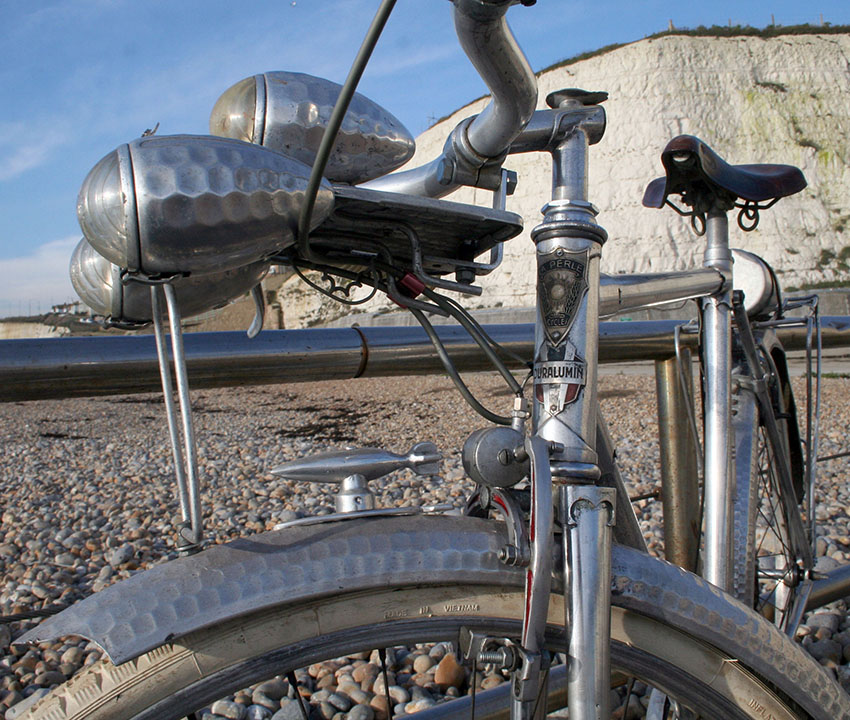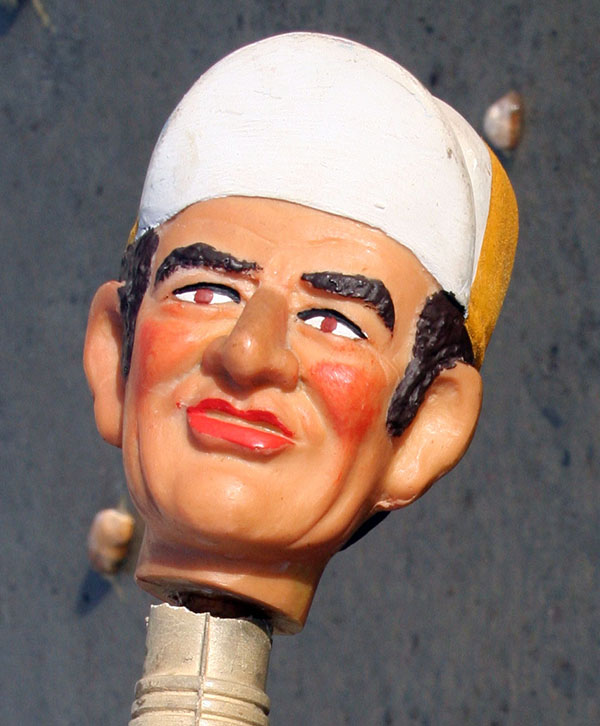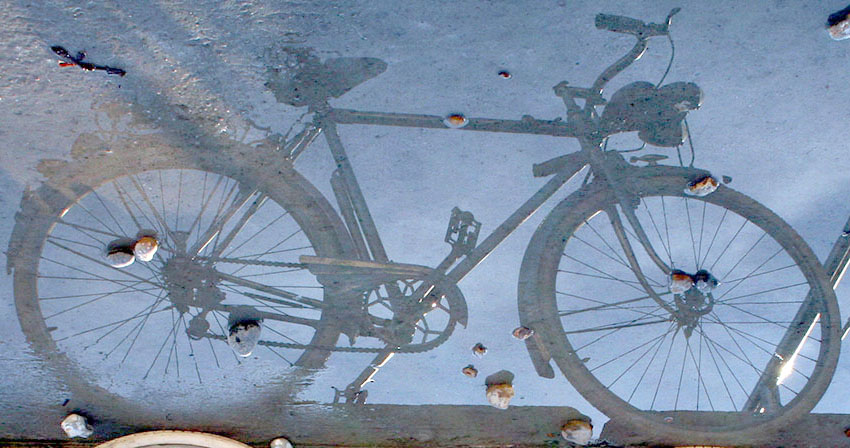

LES FORCATS DE LA ROUTE – THE SLAVES OF THE ROAD

Described by journalist Albert Londres as ‘Le Tour de Souffrance’ – The Tour of Suffering’ – the 1924 Tour de France was more famous for the sudden withdrawal of Henri Pelissier because of petty regulations imposed by organiser Henri Desgranges than for its winner. Henri Pélissier, Francis Pélissier and another rider, Maurice Ville, abandoned the Tour at Coutances in 1924 after Desgrange had not let Pélissier to take off a jersey as the sun came up. They were met in the station café by the journalist Albert Londres, who normally wrote about social and international affairs but was following the Tour for Le Petit Parisien.
Londres’ piece, reproduced largely as a dialogue, appeared under the headline ‘Les Forçats de la Route.’
“You wouldn’t believe that all this is about nothing more than a few jerseys. This morning, in Cherbourg, a race official came up to me and without a word, he pulled up my jersey to check that I’m not wearing two. What would you say if I pulled open your waistcoat to see if your shirt was clean? That’s the way these people behave and I won’t stand for it. That’s what this is all about.”
“But what if you were wearing two jerseys?”
“That’s the point. If I want to, I can wear 15. What I can’t do is start with two and finish with only one.”
“Why not?”
“Because that’s the rule. We don’t only have to work like donkeys, we have to freeze or suffocate as well. Apparently that’s an important part of the sport. So I went off to find Desgrange. ‘I can’t throw my jersey on the road, then?’ ‘No,’ he said, ‘you can’t throw away anything provided by the organisation.’ ‘But this isn’t the organisation’s —it’s mine.’
“‘I don’t conduct arguments in the street,’ he said. ‘OK,’ I said, ‘if you’re not prepared to talk about it in the street, I’m going back to bed.’
“‘We’ll sort it all out in Brest, he said. It will definitely be sorted out in Brest, I said, because I’m quitting. And I did.”
Pélissier went to his brother, Francis, told him his decision and encouraged him to do the same. Francis said that suited him because he had a bad stomach and no enthusiasm for racing. Ville said he hadn’t been part of the strike but that the other two had picked him up along the road. He was too tired to go on, he said.
“You have no idea what the Tour de France is,’ Henri said. “It’s a calvary. And what’s more, the way to the cross only had 14 stations — we’ve got 15. We suffer on the road. But do you want to see how we keep going? Wait…’
From his bag he takes a phial. “That, that’s cocaine for our eyes and chloroform for our gums…”
“Here,” said Ville, tipping out the contents of his bag, “horse liniment to keep my knees warm. And pills? You want to see the pills?” They got out three boxes apiece.
“In short,” said Francis, “we run on dynamite.”
Henri takes up the story. “You ever seen the baths at the finish? It’s worth buying a ticket. You go in plastered with mud and you come out as white as a sheet. We’re drained all the time by diarrhoea. Have a look at the water. We can’t sleep at night. We’re twitching as if we’ve got St Vitus Dance. You see my shoelaces? They’re leather, as hard as nails, but they’re always breaking. So imagine what happens to our skin. And our toenails. I’ve lost six. They fall off a bit at a time all through the stage. They wouldn’t treat mules the way we’re treated. We’re not weaklings, but my God, they treat us so brutally. And if I so much as stick a newspaper under my jersey at the start, they check to see it’s still there at the finish. One day they’ll start putting lumps of lead in our pocket because God made men too light.”
– ‘Les Forçats de la Route,’ by Albert Londres, published in Le Petit Parisien, 1924

The Pelissier brothers were France’s most iconic cycle racers. As well as being one of the greatest French racing cyclists, Henri Pelissier was willing to stand up to corporate greed which was, as it always is, at the expense of the ordinary working man. Having the balls to expose and confront the person who is paying your wages – putting your own career on the line – is the essence of the French national character.
Because Henri Pelissier was arguably France’s greatest cycle racer, his personal life was open to public scrutiny, exposing his irascible character. His wife killed herself, and his lover shot him dead two years later with the same pistol. It beggars the question: is a ‘great man’ judged by his art, or by his compassion?
80 years down the road, a Pelissier bicycle is a French icon in its own right, a vehicular work of art. Of course, racers put their names to bicycles in the first place to capitalise on their fame. Customers obviously knew that they would not compromise their reputation, and their machines were well designed, built to the highest standards and elegantly styled. They were popular in their day and, in the 21st century, they are rare and appreciating classics … a wonderful reminder of times when racing cyclists were national – and worldwide – heroes.
La Perle bicycles were raced in France in 1935, riders wearing red shirts with white stripes. Charles Pelissier rode as an individual in the Tour de France that year. After WW2, the well-known racing cyclist Francis Pélissier, known as Le Grand, became director of ‘Cycles La Perle.’ With less sponsorship due to a downturn in the postwar market, many similar companies were established by the racers themselves to provide employment for their teams.
Francis was the second oldest of the Pélissier brothers, all prominent in the world of cycling racing. Henri, the oldest, was the most famous Pelissier. His career, though very successful, was plagued by arguments with race sponsors and organisers, as he constantly campaigned for better conditions for racing cyclists. He was shot and killed by his mistress in 1935 (using the same gun that Pelissier’s wife had used to commit suicide two years before).
After a successful period as a professional cyclist, Francis managed the La Perle team during 1951, when its top rider, Hugo Koblet, won the Tour de France. The Pélissier company, run by brother Charles, was one of several who made featherweight Mecadural bicycles. They were lightweight by contemporary standards (14.3 kg), the only component heavier than necessary being the lights.
Mercier was the main manufacturer of Mecadural bicycles after WW2. They supplied complete bicycles to other companies, who might add their own name to the machine. Bike builders could also buy just the Mecadural frame and add their own choice of components. Mercier was a well-established company, starting in 1919 making components and complete machines from 1930; the company closed in 1985.
Of the smaller builders, La Perle was one of the more prominent manufacturers of Mecadural bicycles. Observe the expanding lugs on this La Perle frame, enabling it to be built to various sizes, according to customer requirements.
Cycles La Perle unfortunately went out of business in 1955.


1947 Velo La Perle Meca Dural Duralumin
21″ Frame
26″ Wheels
Frame No 4892
(Now sold)

I’d been looking for an aluminium la Perle for many years. After finding one at last, I decided to replace a few parts to improve its looks. But accessorising a bike can become an obsession. Perhaps it’s to do with ‘the thrill of the chase?’ Anyway, I couldn’t stop, and I ended up with more parts than I expected, including a few parts rarer than the bicycle itself. The result is that it’s now absolutely over-accessorised.

Being blessed with a Duralumin frame, this La Perle is lighter than most lightweight bicycles. It’s a pleasure to ride and, with the ornate Martele mudguards and completely over-the-top matching parts and accessories, it turns heads wherever it’s ridden.
The Stronglight chain wheel and Simplex gears were already on it, as were the original 1950s Hutchinson tyres, tubes and valves. I replaced the damaged handgrips with new-old-stock originals. A friend gave me one of the brakes seven years ago, and I was lucky enough to find another to match. The pedals, chainguard, lights and bell were fitted to match the pattern of the Martele mudguards.
This bicycle was manufactured during the heyday of French styling, when bicycles were treated with the same respect given to works of art. La Perle, run by the famous Francis Pelissier, had notable racing successes during this period and owning any of the company’s bicycles at this time was an aspiration for any cyclist.
It still is.




LA PERLE IN THE TOUR DE FRANCE




















DURALUMIN

Duralumin: strong, hard, lightweight alloy of aluminum, widely used in aircraft construction, discovered and patented in 1910 by Alfred Wilm, a German metallurgist; it was originally made only at Düren in Germany. The original composition has been varied for particular applications; it may contain about 3 or 4 percent copper, 1/2 to 1 percent manganese, 1/2 to 1 1/2 percent magnesium, and, in some formulations, some silicon. After heat treatment and aging, these alloys are comparable to soft steel in strength.
Duralumin alloys are relatively soft, ductile, and workable in the normal state; they may be rolled, forged, extruded, or drawn into a variety of shapes and products. Their light weight and consequent high strength per unit weight compared to steel suit them for aircraft construction. Because duralumin loses strength in welding, a special laminated sheet form called Alclad is used for aircraft construction; it has thin surface layers of pure aluminum or a corrosion-resistant aluminum alloy covering the strong duralumin core.

When the great airship Hindenburg crashed in Lakehurst New Jersey in May of 1937. It was the death knell to the Dirigible. The great fire and blaze that was created when she exploded and burned cost the lives of 35 people. Oddly enough much of the ship burned and much of the fabric that surrounded the frame of the vessel was lost. But surprisingly, more than what you would imagine survived. I have seen many pieces of the Hindenburg and seen a lot of fabric from her. Plus even more widely found was much of her duralumin. This was the material that the frame of airships were made from. A very light alloy and as light as a feather. It was the material that would allow the airship program to exist in all the countries that had one. *

Caminargents were top-of-the-range aluminium bicycles; with their distinctive octagonal tubes and ornate cast lugs they were expensive to produce. Mecadural frames filled a gap in the market for those who couldn’t afford Caminargents. The combination of components used was at the discretion of the assembler. This style of aluminium bicycle was made between the 1930s and 1950s, constructed from Alumag (a brand of aluminum-magnesium alloy) tubing held in place in the lugs by internal expanders. Duralumin is twice the strength of aluminium, despite being light in weight, and was originally designed for use in Zeppelin airships and early aircraft.
The Hindenburg had a duralumin structure, incorporating 15 Ferris wheel-like bulkheads along its length, with 16 cotton gas bags fitted between them. In 1931 the Zeppelin Company purchased 11,000 lbs of duralumin salvaged from the wreckage of the October 1930 crash of the British airship R101, which might have been re-cast and used in the construction of the Hindenburg.
Although aluminium bicycles were in use since the late 1890s, the Hindenburg disaster led to a surplus of duralinum, influencing its increased use in bicycle manufacture. After WW2, when steel use was reserved for export products, aluminium was more affordable and became the lightweight and tough material of choice for bicycle frames, especially in France.




















* Airship info – http://edisoneffect.blogspot.co.uk/2011/02/airship-hindenburg-few-bits-and-pieces.html
**Pelissier info – http://www.portocalamecanica.ro/velo-city-2013-bicycle-history-goes-to-the-museum.html
La Perle info – http://www.tontonvelo.com/LaPerle_Eng.htm
La Perle Tour de France scans thanks to cyclecrank – http://www.flickr.com/photos/cyclecrank/2222221947/lightbox/
PHOTO LOCATION: Rottingdean Beach (France over the horizon)















































